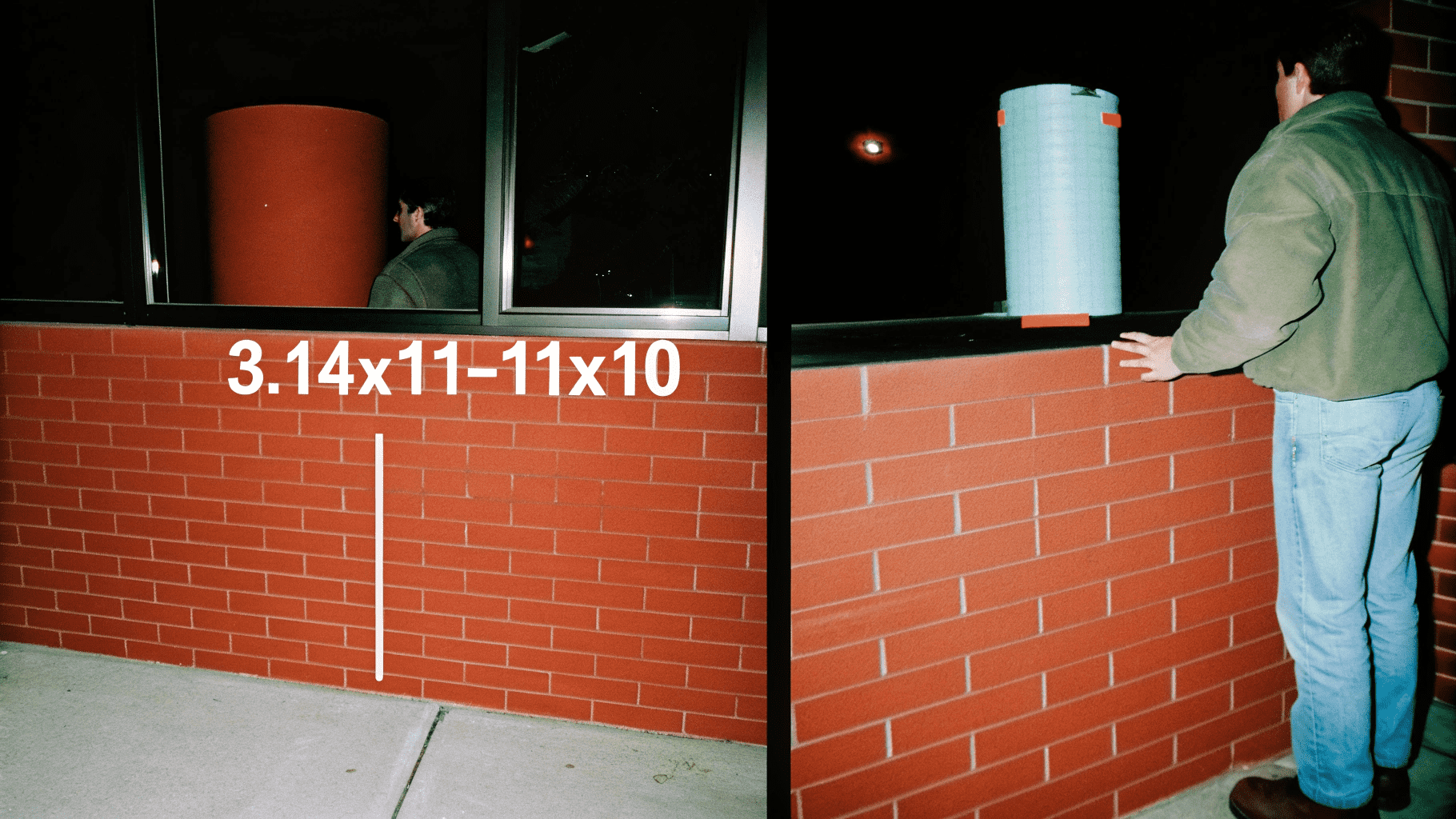
cricketculub.xyz – Digital Cricket Platform for Club & Fans
July 23, 2025
Braylon Medders Christmas List – Simple Wish, Lasting Impact
July 25, 2025The expression 3.14x11x11x10 is a straightforward way to calculate the volume of a cylinder using real numbers. This formula replaces π with 3.14 and uses 11 as the radius and 10 as the height. It’s commonly taught in schools, used in competitive exams, and applied in practical fields like engineering and construction. Understanding how to solve this helps you measure space in real-world objects like pipes, tanks, and containers. It also teaches important math skills like squaring numbers, multiplying correctly, and working with units. This article explains the concept in detail, step by step, to help learners of all levels.
What Does 3.14x11x11x10 Represent in Mathematics?
The expression 3.14x11x11x10 represents the formula used to calculate the volume of a cylinder. In this expression, 3.14 is the approximate value of π (pi), 11 is the radius of the cylinder, and 10 is the height. According to the formula for volume of a cylinder (π × r² × h), this expression simplifies the process using numbers. It is often used in school exercises and engineering tasks where quick volume estimations are needed.
This formula is especially useful when exact values are not required, making it ideal for day-to-day problems or student-level questions. It helps us understand how volume is calculated using real-world dimensions. Whether calculating the capacity of a pipe or a tank, using the expression 3.14x11x11x10 allows people to apply a mathematical principle practically. The final result is in cubic units, representing the total internal space of the cylinder in question.
Understanding the Formula: π × r² × h Explained Simply
The formula π × r² × h helps us calculate the volume of a cylinder. π (pi) is a mathematical constant roughly equal to 3.14. The r² part means you multiply the radius by itself, and then multiply that by the height. So, the entire formula calculates how much space a cylinder holds inside. This equation is commonly used in geometry and practical measurements in daily life or technical work.
When replaced with actual values like 3.14x11x11x10, the formula becomes easier to understand for learners and non-experts. You first square the radius (11 × 11), then multiply by the height (10), and finally multiply by 3.14. This simple method teaches you how formulas are used in real applications. It also makes math less scary and more accessible to beginners who want to understand shapes, space, and measurements in a hands-on way.
How to Calculate the Volume of a Cylinder Using 3.14x11x11x10
To calculate the volume of a cylinder using 3.14x11x11x10, follow the correct order of steps. First, multiply the radius by itself: 11 × 11 = 121. This gives you the r² part of the formula. Then, multiply that result by the height: 121 × 10 = 1210. Finally, multiply by 3.14 (π): 1210 × 3.14 = 3797.4 cubic units. That’s your answer.
This number represents the total volume of a cylinder with those dimensions. Always remember, units are important—if your measurements are in centimeters, your result will be in cubic centimeters (cm³). This simple approach helps students, teachers, and professionals calculate volume quickly and clearly. Understanding this basic formula prepares you for more advanced math and science topics, and helps solve everyday problems like measuring tanks, containers, or cylindrical spaces accurately and efficiently.
Why 3.14 is Used Instead of π in Real-World Calculations
The number π (pi) is an irrational number, meaning it goes on forever without repeating. In real-world problems, we don’t need all those digits, so we use the shortened version: 3.14. This makes calculations easier and faster, especially for students, workers, and professionals who don’t need extreme accuracy. Using 3.14 instead of the full π helps simplify formulas like 3.14x11x11x10, making them more practical for everyday use.
In school textbooks and construction tasks, 3.14 gives a result that’s close enough for most needs. Unless you’re doing advanced scientific research, the small difference doesn’t change much. People use this rounded value in architecture, plumbing, carpentry, and design work where quick, reliable answers are required. That’s why 3.14 has become the standard in many math problems and applications. It’s a perfect balance between simplicity and usefulness in the real world, especially when estimating volume.
Step-by-Step Guide: Solving 3.14x11x11x10 Easily
Let’s solve the expression 3.14x11x11x10 step by step. First, multiply 11 by 11. That gives us 121, which is the squared radius (r²). Now take 121 and multiply it by 10, the height. That equals 1210. Lastly, multiply that number by 3.14 (π). So, 1210 × 3.14 equals 3797.4. This is the volume of the cylinder in cubic units.
This step-by-step method is simple and helps avoid confusion. Whether you’re solving this on paper or using a calculator, this approach keeps your work organized. It’s helpful for students learning geometry or people doing basic engineering calculations. By following the order—square radius, multiply by height, then multiply by pi—you ensure that the answer is correct. Practicing this method with real numbers like in 3.14x11x11x10 makes understanding volume much easier and boosts confidence in solving other similar math problems.
Real-Life Examples Where 3.14x11x11x10 Applies
The formula 3.14x11x11x10 can be used in many real-life situations. For example, if you’re building a round water tank with a radius of 11 inches and a height of 10 inches, this formula gives you the volume. You’ll know exactly how much water it can hold. It also applies to cooking, like calculating batter needed for a round cake pan of specific size.
In factories or workshops, workers use this formula to measure how much material a cylinder-shaped object can hold or carry. Engineers apply it when designing pipes, drums, or tanks. Even in agriculture, it helps calculate how much grain fits in a silo. Using 3.14x11x11x10 makes it easy to solve these problems without needing complex tools. It’s a powerful way to apply school math in real-world situations that need quick, accurate measurements.
3.14x11x11x10 in School Mathematics: A Common Example
In schools, 3.14x11x11x10 is a classic example used in geometry lessons to teach volume calculation. Teachers often assign such problems to help students understand how formulas apply to real shapes like cylinders. It’s simple, uses round numbers, and avoids confusing decimals, which makes it easier for beginners to follow. Students learn how to square the radius, apply the height, and multiply with 3.14 to find the final volume.
This example also appears in exams and homework, helping students practice the correct order of operations. It’s a practical question that connects theory with real-life applications. Many students remember this format well because it’s used repeatedly throughout middle and high school. By mastering problems like 3.14x11x11x10, they gain confidence in solving other geometric problems. It’s more than just numbers—it builds understanding of how math applies to containers, shapes, and space around us.
Common Mistakes in Calculating 3.14x11x11x10 and How to Avoid Them
One common mistake when solving 3.14x11x11x10 is skipping the correct order of operations. Some students multiply 3.14 with 11 first instead of squaring 11 first. Always remember: square the radius before multiplying by height and then by 3.14. That means do 11 × 11 before anything else. This step is crucial for getting the right volume answer.
Another mistake is ignoring units. If the radius is in centimeters, the result should be in cubic centimeters, not just numbers. Also, sometimes people round too early, which can lead to small errors in the final volume. Using a calculator can help ensure accurate results, but understanding the process matters most. Avoiding these small mistakes ensures you get reliable answers every time. Practice and clear thinking make problems like 3.14x11x11x10 easy to solve and apply correctly in both tests and real-life situations.
Using Calculators vs Manual Method for 3.14x11x11x10
Solving 3.14x11x11x10 manually helps build your understanding of the formula. It trains your brain to follow steps, apply multiplication, and work with numbers confidently. For students, solving by hand develops strong problem-solving skills and reinforces basic math operations. It’s also useful during exams where calculators may not be allowed or when you need to double-check a result.
On the other hand, using a calculator saves time and reduces error. It’s especially helpful for professionals who need quick results during work. A calculator ensures that large or decimal-heavy numbers are handled accurately. However, understanding the steps behind the formula is still important. Whether you use your brain or a calculator, knowing how to approach 3.14x11x11x10 helps you avoid mistakes and apply the concept correctly in both learning and real-world situations.
How Engineers Use the Formula 3.14x11x11x10 in Practice
Engineers use the formula 3.14x11x11x10 to calculate volume in designing tanks, pipes, containers, and machines. When creating a cylindrical part, they need to know how much space it will hold or occupy. This formula helps them quickly estimate those volumes before moving to detailed software. It’s especially helpful in early planning and prototyping stages.
Even in construction or mechanical design, the formula is used to check if materials will fit properly or store the right amount. Engineers may adjust the values of radius and height, but the method remains the same. Knowing how to calculate 3.14x11x11x10 by hand or software ensures efficiency and accuracy. Whether it’s water, oil, or air volume being measured, this basic cylinder formula is essential in many types of technical projects.
3.14x11x11x10 for Competitive Exams: A Quick Trick
In competitive exams like SATs or engineering entry tests, you might face questions involving cylinders. The expression 3.14x11x11x10 is a fast way to solve such problems. Instead of remembering symbols, you just use the numbers directly. This saves time and reduces mistakes. Memorizing patterns like this helps students complete questions quickly and accurately under time pressure.
Many exams don’t allow calculators, so mental math or fast paper solving becomes necessary. Practicing with set examples like 3.14x11x11x10 prepares you for similar questions. You understand the logic behind squaring the radius, applying the height, and multiplying by π (3.14). Once you’ve done this a few times, you can recognize volume-based problems easily. It’s one of the best math shortcuts to have when you need to solve geometry questions in a hurry.
From Circles to Cylinders: Understanding π and Its Applications
The number π (3.14) starts with circles—it’s used to find the circumference and area of round shapes. But its usefulness doesn’t stop there. When we extend a circle into three dimensions, it becomes a cylinder, and π becomes part of volume calculations like 3.14x11x11x10. This connection shows how π travels from flat shapes to 3D ones.
Understanding π’s role helps students link geometry topics together. You don’t just memorize formulas—you see how they build on each other. First, you learn circle area as πr². Then, you learn cylinder volume as πr²h. Seeing 3.14x11x11x10 in this context helps make sense of how math grows step by step. It also teaches that math is connected, logical, and useful across many shapes and applications.
Breaking Down 3.14x11x11x10 for Kids and Beginners
For kids or beginners, the expression 3.14x11x11x10 might look confusing at first. But it becomes easy once broken into steps. Start by squaring 11 (11 × 11 = 121). Then multiply by 10 (121 × 10 = 1210). Finally, multiply that by 3.14. You’ll get 1210 × 3.14 = 3797.4. That’s the total volume of the cylinder in cubic units.
Using numbers instead of letters helps beginners avoid fear of formulas. They can focus on the math operations they already know. Teachers often use real-life examples like water tanks to make it even more fun. When kids realize that 3.14x11x11x10 helps measure real things, it builds interest and confidence. It also shows that math isn’t just about solving problems—it helps explain the world around us in a simple, logical way.
Why 3.14x11x11x10 Is a Perfect Example to Learn Geometry Basics
The expression 3.14x11x11x10 combines all the key ideas in basic geometry—shapes, measurements, multiplication, and formulas. It’s easy to solve, practical to use, and tied to a familiar object: the cylinder. Students learn how a flat circle grows into a 3D shape and how volume measures the space inside it using this one equation.
This example also reinforces the importance of following mathematical steps. You square the radius first, then multiply by height, then by π. It shows that order matters in math. Whether used in classrooms or technical work, 3.14x11x11x10 teaches volume, logic, and how numbers describe real shapes. It’s an excellent introduction to geometry for students and a handy tool for anyone needing to estimate space quickly and correctly.
FAQ’s
What does 3.14x11x11x10 calculate?
It calculates the volume of a cylinder using π ≈ 3.14, with radius 11 and height 10. The answer is in cubic units.
Why is 3.14 used instead of π?
3.14 is a simple and practical approximation of π (pi), which makes calculations faster and easier in everyday use.
How do I solve 3.14x11x11x10 step by step?
First, do 11×11 = 121, then 121×10 = 1210, then 1210×3.14 = 3797.4 cubic units.
Where is this formula used in real life?
It’s used in plumbing, architecture, tank design, baking, and school math to calculate cylinder volume.
What unit will the result be in?
The result will be in cubic units (e.g., cm³, in³), based on the units used for radius and height.
Conclusion
The expression 3.14x11x11x10 is more than just a math problem—it’s a practical example of how geometry works in real life. Whether you’re a student learning volume or a professional estimating space, this simple formula offers a clear way to calculate cylinder capacity. It teaches important concepts like squaring, using π, and understanding 3D measurements. From classrooms to construction sites, this method is widely used and easy to remember. Mastering it strengthens your foundation in math and builds confidence in solving more complex problems. It’s a perfect bridge between learning and real-world application.
Related Post:





